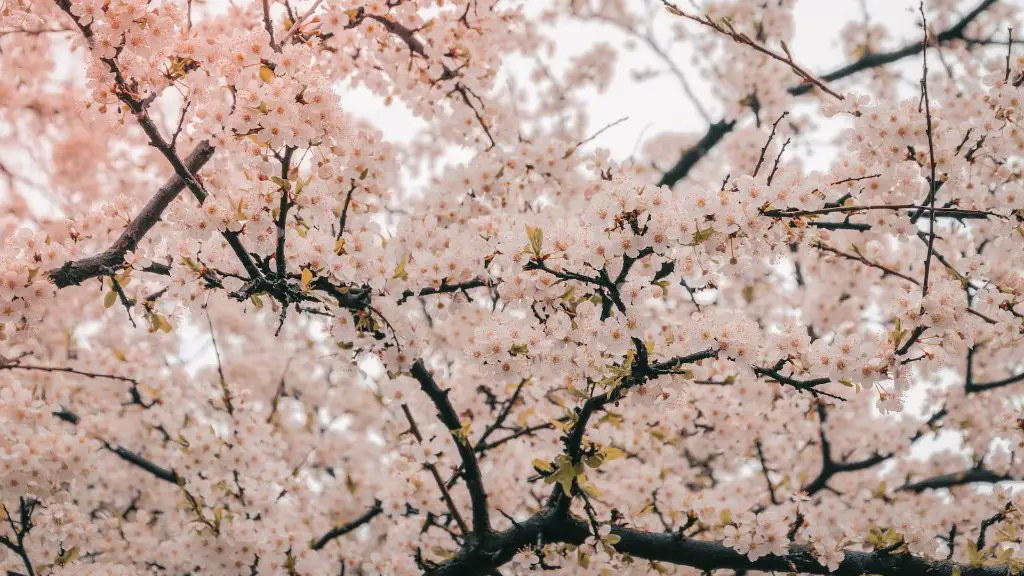Majesty palms (Ravenea rivularis) are large, graceful palms that make excellent houseplants. They are native to the island of Madagascar, where they grow in the rainforest understory. These palms like bright, indirect light and need to be kept moist, but not soggy. Let the soil dry out slightly between watering. Majesty palms are sensitive to fluoride, so use fluoride-free water or let your tap water sit for 24 hours before using it on your palm. Majesty palms can be sensitive to temperature changes, so keep them away from drafts. These palms can grow up to 10 feet tall, so be sure to give them plenty of room to grow!
The first step is to choose a location for your majesty palm tree. The tree prefers full sun but can live in partial shade. It also needs well-drained soil.
Once you have found the perfect spot for your majesty palm, dig a hole that is twice the width of the tree’s root ball and just as deep.
Carefully remove the tree from its pot or container and loosen any tightly bound roots. Place the tree in the hole so that the top of the root ball is level with the ground.
Fill in the hole with soil, packing it gently around the roots. Water the tree well.
Mulch around the tree to help retain moisture and protect the roots.
Your majesty palm tree will need to be watered regularly, especially during the hot summer months. The tree likes to be kept moist but not wet. Allow the soil to dry out slightly between watering.
Fertilize your majesty palm tree three times a year – in spring, summer, and fall – with a palm fertilizer.
How do you take care of an indoor majesty palm?
When growing majesty palm indoors, it is important to refresh the tray with water periodically and to use a general houseplant fertilizer every two to three months in spring and summer. Majesty palm also needs a chance to rest in the cooler, dimmer months of winter, so you don’t need to fertilize at all during this time. Your majesty palm needs space to thrive, so make sure to give it plenty of room to grow.
It is important to water your plants 1-2 weeks, allowing the soil to dry out half way down between waterings. Expect to water more often in brighter light and less often in lower light. It is best to always check the soil moisture level before watering.
Why are the tips of my majesty palm turning brown
If you notice brown leaf tips or dry brown spots on your majesty palm, it may be a sign that the plant is unhappy with the type of water it’s receiving. Some plants are sensitive to chlorine and other chemicals found in tap water, so if that seems to be causing problems, you may want to switch to purified, distilled, or rainwater.
This Majesty palm is a perfect addition to your indoor or outdoor space! With its easy-care nature, this palm will add a touch of classic good looks to your home.
What does an overwatered majesty palm look like?
If you notice that your root ball is soaked or if you see dark, squishy stems or dark spots on the fronds, your palm is probably overwatered and possibly experiencing root rot. If this happens, repot the plant into fresh, clean soil and a clean pot. Make sure to remove any dark, squishy roots.
Majesty palms are a beautiful addition to any home, and they can also be used outdoors on shaded decks, patios, and balconies. However, because they are typically grown in low-light conditions to ensure they thrive as houseplants, they shouldn’t be placed in hot, sunny situations outdoors.
How do I know if my majesty palm is dying?
Majesty palm fronds can develop brown spots for a variety of reasons, including Incorrect watering, lack of nutrients, or pest infestation. If the brown spots are accompanied by yellowing or browning of lower leaves, or a drooping trunk, the palm may be suffering from trunk rot. Lack of buds during the growing season can also be indicative of trunk rot. If you suspect your palm has trunk rot, it is important to seek professional treatment as soon as possible to avoid permanent damage or death of the plant.
If your majesty palm’s fronds are turning yellow with crispy brown tips, it’s likely that your plant wants more humidity! A humidifier or humidity tray can help to increase the humidity around your plant and improve its health.
Can a majesty palm get too much sun
If you want to keep your majesty palm healthy, make sure it gets indirect sunlight rather than direct sunlight. Too much direct sunlight will cause the leaves to burn!
Coffee grounds, in addition to providing nutrients like nitrogen, phosphorus, potassium, calcium, magnesium, and copper to palm trees, are an excellent source of nutrition Palm trees should be given coffee grounds in early spring and throughout their growing season. Coffee grounds contain a lot of nitrogen, which is essential for palm trees, and phosphorus, which helps the tree to develop strong roots. The coffee grounds also help to improve the drainage and aeration of the soil.
Is Epsom salt good for palm trees?
If you think your palm is suffering from a magnesium deficiency, you can supplement its regular fertilizer applications with Epsom salt. Just sprinkle 2 to 3 pounds of Epsom salt under the tree’s canopy, then water.
If you notice brown tips on your leaves, don’t panic! This is usually just a sign that your plant is stressed and with proper diagnosis and care, it can recover. However, if leaves are fully brown, dead, or dying, it’s ok to trim them off. Just be careful not to trim too many leaves at once, as this can over-stress the tree.
What is the lifespan of majesty palm
The Dracaena, or Dragon tree, is a widely popular houseplant due to its resilience and ease of care. It grows at a fast rate, and under ideal conditions can be expected to live for approximately 20 years. This houseplant performs well in both bright or indirect sunlight and strong artificial light, and can therefore be situated in almost any well-lit room or location.
Majesty palms are a type of indoor palm plant that can improve air quality and act as a decoration. They are also pet-safe and require minimal space.
When should I repot my majesty palm?
It is important to repot an established majesty palm biannually in order to provide the fresh soil and extra space it needs to accommodate its growing root system. However, you must do this in spring or early summer to prevent harm to the tree’s roots.
If your majesty palm is dying, there are a few things you can do to try and save it. First, keep the soil moist but make sure it is not fully saturated with water as this can contribute to the rotting of roots, causing the plant to die. If you don’t live in a tropical or humid area, try to create one for your plant by spraying water on the leaves regularly. Additionally, make sure the plant is getting enough sunlight and check for pests as both of these can also contribute to a majesty palm’s death.
Final Words
Majesty palm trees are tropical plants that thrive in humid climates. They are popular houseplants because of their ability to purify the air and their long-lived, elegant fronds. Majesty palms can grow up to 6 feet tall and 3 feet wide.
To care for a majesty palm tree, water it regularly, fertilize it monthly, and mist it weekly. Place the palm tree in a bright room with indirect sunlight. Keep the soil moist but not soggy. Palms are sensitive to cold, so keep them away from drafts and windows. If the leaves start to yellow, it means the plant is getting too much sun.
Pruning is not necessary, but if you want to shape the plant, cut off the fronds at the base of the plant. New growth will appear in a few weeks.
Majesty Palm trees are one of the most loved indoor palms due to their easy care and graceful nature. When giving your majesty palm tree the proper care, you can ensure that it will thrive and bring beauty to your home for years to come.



